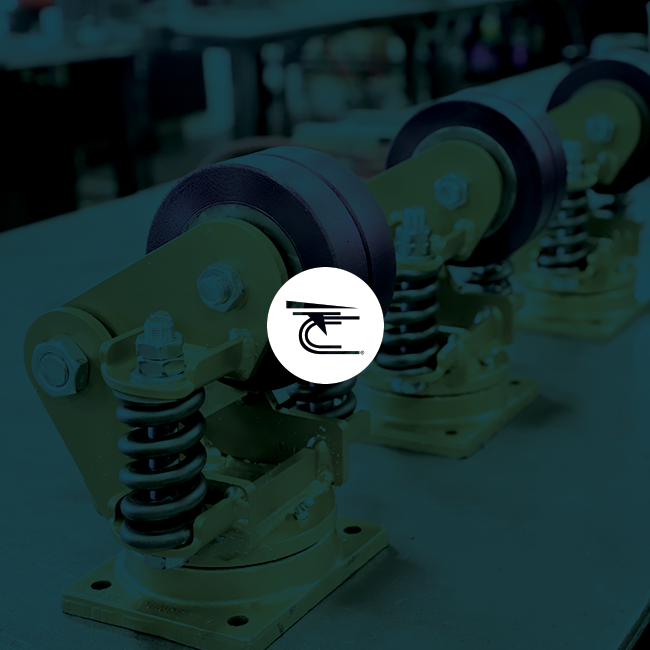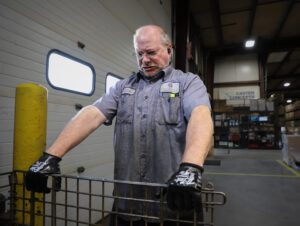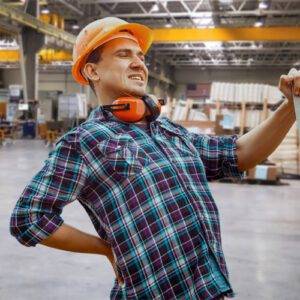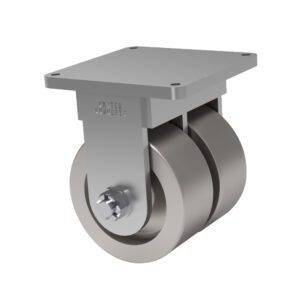

It’s a common misconception that improving a caster’s ergonomic capabilities requires sacrificing its ability to withstand extreme temperatures or heavy loads (and vice versa). Fortunately, this is not the case. It is possible for high-heat and high-capacity casters to be ergonomic and promote safety in the workplace. Here’s what you should know about choosing the perfect combination.
 When it comes to describing casters, the term “ergonomic” relates to efficiency, safety, and comfort. The more efficiently and comfortably an operator can move a load from start to finish, the more ergonomic the caster. For a caster to be truly ergonomic, it must be able to do a few different things. First, it must reduce the amount of force required for an operator to start the initial movement. Second, it must continue to move freely across the floor or ground without requiring any undue force. Finally, the operator must be able to navigate the load around corners or obstacles without any excessive strain.
When it comes to describing casters, the term “ergonomic” relates to efficiency, safety, and comfort. The more efficiently and comfortably an operator can move a load from start to finish, the more ergonomic the caster. For a caster to be truly ergonomic, it must be able to do a few different things. First, it must reduce the amount of force required for an operator to start the initial movement. Second, it must continue to move freely across the floor or ground without requiring any undue force. Finally, the operator must be able to navigate the load around corners or obstacles without any excessive strain.
Ergonomic high-capacity and high-heat casters can benefit the workplace tremendously. Because they reduce the force and strain required to move loads, they reduce the risk of overexertion injuries, which are the most common injuries in the US workforce today. According to the National Safety Council, or NSC, one American worker is injured on the job every seven seconds. That’s 4,500,000 workers injured every single year. Even the smallest injury can drastically impact productivity, and according to the same source, some 104,000,000 collective production days were lost to injury in 2016 alone.
 Ergonomic injuries are also very expensive. According to the MSD Solutions Lab funded by NSC, Injuries caused by overexertion cost $13.3 billion alone.
Ergonomic injuries are also very expensive. According to the MSD Solutions Lab funded by NSC, Injuries caused by overexertion cost $13.3 billion alone.
When ergonomic casters make it easier for operators to move heavy loads, they can do so more quickly, which also boosts productivity. Reducing the amount of sheer physical force required to move these loads can also boost workplace morale and help employees feel better about their jobs overall. Saving money on worker’s compensation claims and the need to hire employees to fill in for those with injuries is yet another incentive to make the switch.
While it makes sense that most casters designed for light-duty applications would be ergonomic (after all, very little force is required to start, stop, and maneuver light loads), not all heavy-duty casters are designed with safety in mind. Though there are some cases in which casters designed to withstand extreme temperatures may actually sacrifice ergonomics, this is not always the case.

2-99 Super Heavy Duty Caster With Forged Steel Wheel
One of the best examples of how today’s most innovative caster manufacturers have blended safety and high capacity is the dual-wheel caster. These come in a variety of materials, sizes, and types and can support up to 50,000 pounds in temperatures as high as 700 degrees. Thanks to their low profile and high-tech materials, they are easy to start, stop, and maneuver.
The US Bureau of Labor Statistics has reported that manufacturing and production facilities are among the top five occupations with the largest number of workplace injuries in the country for many years in a row. Fortunately, by implementing high heat and high-capacity casters designed to provide ergonomic benefits, it is possible to drastically reduce injuries in your facility, improve your productivity, and increase your bottom line all at the same time.